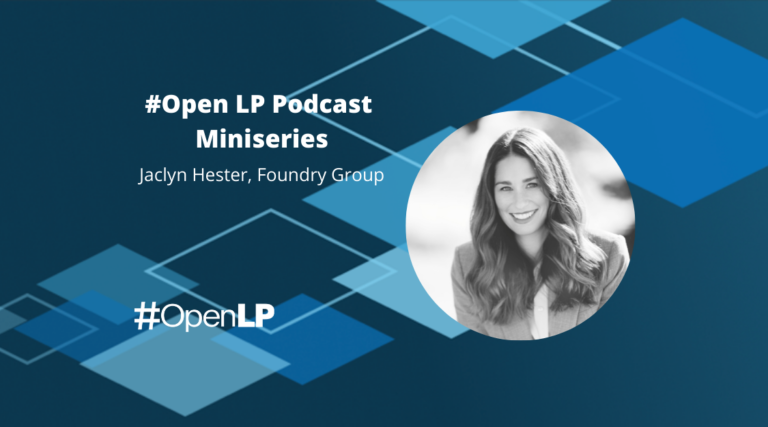Two LPs, a GP and a managing director from Cambridge Associates walk into a bar. Sounds like the opening to a killer gag that would be appreciated by dozens.
But wait, it wasn’t a bar, it was a lowly conference room in New York City. And rather than being protagonists in a joke, these four cats — Andy Weissman from Union Square Ventures, Theresa Hajer from Cambridge Associates, Chris Douvos from VIA Funds and Beezer Clarkson from Sapphire Ventures — were co-hosting an afternoon roundtable discussion at last week’s VentureCrushNY(graciously hosted by Ed Zimmerman, Chair of Lowenstein Sandler’s Tech Group). Along with these four co-hosts were about 20 people, mostly GPs with a few brave entrepreneurs and fellow LPs mixed in. Our topic was “The Outlook for LPs in Venture Funds.”
Chatham House rules apply naturally so we can’t disclose who said what specifically. It was however a meaty conversation at about the one-third mark of a whirlwind 2016, a year that has proven breathless for LPs and complicated for GPs as a result.
We covered a fair bit of ground in our 90-minute roundtable, including:
2016 venture fundraising landscape
A ton of money has already been raised this year: $12 billion or so and counting into over 50 U.S. venture funds. The gross majority of this money has gone into $500 million+ sized funds. Separately, but not unrelated, the number of sub-$100 million funds raised in Q1 is at a five- year low*.
Does this mean the torrid pace of new microfund creation is slowing down? Possibly. For now. Afraid to be the last fund standing when the music stops, there are a significant number of venture funds still in the market that are looking to raise before LPs run out of the money they’ve allocated to invest in 2016.
The fortunate few limited partners with venture programs dating back to the early 2000s could be seeing healthy distributions stemming from strong performance in the mid-2000 vintages and looking to re-invest that money back into venture.
LPs, however, who were not invested in those halcyon days for whatever reason, but who have been investing in venture over the last five to eights years have probably found themselves more on the giving than receiving end, a very uncomfortable place as markets gyrate and paper profits inflate portfolios. When coupled with the advent of the so-called “private IPO” versus a public one and the recent dry spell for tech IPOs in 2016, the flow of capital in the venture industry has become in a word — constipated — see: “The Circle of Life and the Exit Sphincter”.
Challenging times could be ahead for fundraising as the reality of cashflow dynamics could overwhelm enthusiasm for innovation finance.
A new playbook?
In tumultuous times, people sometimes seek safety in the established. For many comfort seekers, security may have been found by investing in one of the 30 or so firms that can be described as “brand names”. Cambridge Associates’ research tells us, however, that emerging managers (those boasting roman numerals between I and IV) are consistently among the top-performing funds in their vintages.
Certainly, these findings have provided intellectual support to those investors who have been playing the new manager game for some time, as well as those who are new to the casino. Of course, all investors should note that these managers are also very well represented in the group that underperforms.
Investing in emerging managers can be both rewarding and perilous.
What it takes to get attention
The conversation then turned to an examination of the real issues that differentiate firms in the eyes of LPs. While many GPs tend to focus on their “hot” portfolio companies or their particular areas of concentration, the things that interest LPs are introspective and structural questions such as:
- As venture has become more transparent, it has become difficult to argue that information arbitrage exists. What durable advantage, then, can a GP really have? Geographic focus? Thematic focus? Sector focus? Diversity of team? Speed of decision making? Opinion in the room was that the market today is too crowded for undifferentiated firms to be successful.
- What are a firm’s first principles? In a world defined by rapid change, the ethos of a firm gives investors a sense for what the investment footprint might look like over the entire life of a fund, which typically exceeds a decade. How does one articulate a value proposition that is robust enough to serve as a guidepost while at the same time giving GPs enough room to be opportunistic and evolve? It was noted that there were many different models of success, but great firms consistently have a clear set of guiding principles.
- An oldie but a goodie: can portfolio construction be a tool (at both the GP and the LP levels) for generating outsized returns?
- What is a firm’s philosophy on some ancient truisms that are today in flux? For example, there once was a time when founders would never talk to a GP again if that VC sold into a follow-on round instead of waiting for the exit. Today, this strategy is employed by many seed investors to generate interim liquidity.
- How can LPs and GPs build a mutually beneficial partnership? One could argue the LP-GP relationship has moved ever closer over the years as LPs co-invest more often with their GPs and LPs look to emphasize the “partner” in “limited partner” by being trusted advisors and when possible helping the underlying portfolio companies with connections and resources. Some asserted, “venture is the last intimate asset class”. Yet, others questioned that premise, given how quickly funds are being raised today. This manic pace seemed to offer limited time for funds to get to know LPs, and in response some GPs treat capital as a commodity. At the same time, LPs themselves can be opaque, hard to understand or hard to even find.
Ultimately, one question burned on the lips of most GPs: what the heck are those crazy LPs thinking? As part of the answer to the question, we’ve launched OpenLP, an effort to foster greater understanding and intimacy in the venture investing ecosystem. The goal is for OpenLP to serve as a resource for entrepreneurs, GPs and LPs to navigate the tricky waters of the entrepreneurial finance capital continuum.
*NVCA 2016 Yearbook: http://nvca.org/pressreleases/2016-nvca-yearbook-captures-busy-year-for-venture-capital-activity/



